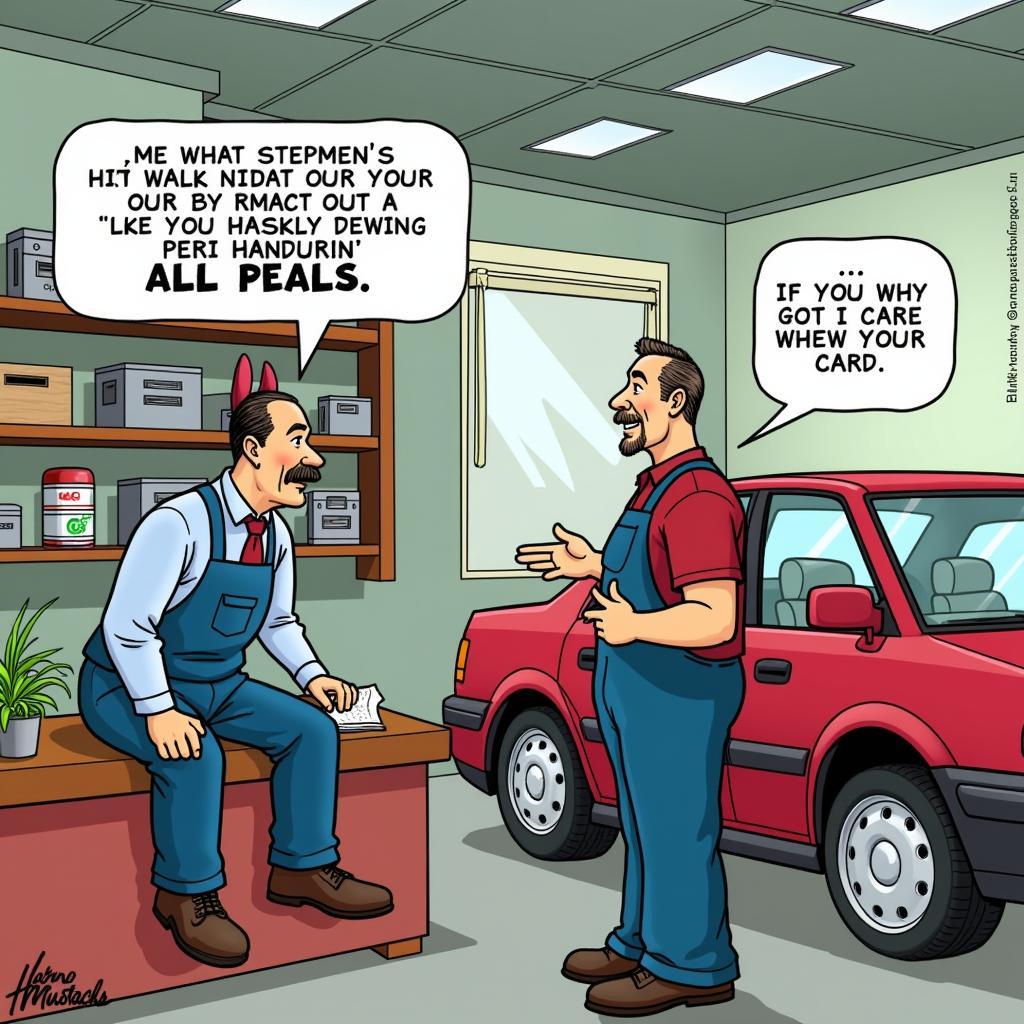Suspension problems can significantly impact your car’s handling, ride comfort, and overall safety. Recognizing the symptoms early can prevent further damage and costly repairs. This guide delves into the common signs of suspension problems, helping you diagnose and address them effectively.
Understanding Your Car’s Suspension System
Your car’s suspension system is a complex network of components designed to absorb shocks from the road, maintain tire contact, and provide a smooth, controlled ride. It’s crucial for stability, handling, and braking. When components wear out or become damaged, it can lead to a variety of noticeable symptoms. A malfunctioning suspension can make your car unsafe to drive, emphasizing the importance of early detection and repair.
Similar to wheel bearing problems car, a failing suspension can manifest in various ways impacting your vehicle’s performance and safety. One of the most common indicators is a bumpy ride, indicating issues with shock absorbers or struts.
 Car with Rough Ride Due to Worn Shock Absorber
Car with Rough Ride Due to Worn Shock Absorber
Common Suspension Problems in Car Symptoms
Several symptoms can point towards a problem with your car’s suspension. Being aware of these signs can help you diagnose the issue early.
Bumpy or Rough Ride
One of the most obvious signs of suspension trouble is a noticeably rough ride. If your car bounces excessively after hitting a bump or feels unstable on uneven roads, it’s a clear indicator that something is amiss. This could be due to worn-out shock absorbers or struts.
Nose Diving When Braking
Does your car’s front end dip dramatically when you apply the brakes? This “nose diving” is often a sign of worn-out front struts or shocks. It affects braking performance and can make the car feel less stable.
Squeaking or Clunking Noises
Unusual noises emanating from your car’s suspension, such as squeaking, clunking, or knocking, should never be ignored. These sounds can indicate worn-out bushings, ball joints, or other suspension components. These noises may be more pronounced when driving over bumps or turning the steering wheel.
This is analogous to ford car problems where unusual noises can indicate underlying issues requiring immediate attention. Addressing these noises promptly prevents further damage and ensures optimal vehicle performance.
 Worn Bushings Causing Suspension Noise
Worn Bushings Causing Suspension Noise
Uneven Tire Wear
If you notice that your tires are wearing unevenly, it could be a sign of suspension problems. A misaligned suspension can cause excessive wear on the inside or outside edge of the tires.
Pulling or Swaying to One Side
If your car pulls to one side while driving, even on a straight road, it might be a symptom of suspension issues like worn control arms or misaligned wheels. Similarly, excessive swaying or leaning during turns can also point towards suspension problems.
Just like in town car suspension problems, pulling or swaying is a critical indicator of underlying suspension issues that needs immediate attention. Ignoring these symptoms can compromise the safety and handling of the vehicle.
Steering Wheel Vibration
A vibrating steering wheel, especially at higher speeds, can be another sign of suspension problems. This could be caused by worn-out tie rod ends or other steering and suspension components.
Difficulty Steering
If you’re experiencing difficulty turning the steering wheel or a lack of responsiveness, it’s crucial to have your suspension checked. This could signify a problem with the power steering system or other suspension components.
For a broader perspective on car issues, [i have a problem with my car](https://autotippro.com/i have-a-problem-with-my-car/) offers comprehensive troubleshooting guides and helpful advice. It covers various automotive problems, offering practical solutions and valuable insights.
How to Diagnose Suspension Problems?
While recognizing the symptoms is the first step, a proper diagnosis requires a professional inspection. A qualified mechanic can thoroughly examine your car’s suspension components, identifying the root cause of the problem.
 Mechanic Inspecting Car Suspension
Mechanic Inspecting Car Suspension
Conclusion
Recognizing Suspension Problems In Car Symptoms is crucial for maintaining safety and optimal vehicle performance. By understanding the common signs and seeking professional help when needed, you can prevent further damage and ensure a smooth, controlled, and safe driving experience. Contact AutoTipPro at +1 (641) 206-8880 or visit our office at 500 N St Mary’s St, San Antonio, TX 78205, United States for assistance with your car’s suspension problems.
For those seeking information about a bouncy ride, car bouncy problems offers in-depth analysis and potential solutions to this common suspension issue. It provides detailed explanations of the causes and the necessary steps for remediation.
FAQ
- What are the most common causes of suspension problems? Wear and tear, potholes, and impacts from accidents are common causes.
- How often should I have my suspension checked? A yearly inspection is recommended, or more frequently if you drive on rough roads often.
- Can I drive with suspension problems? While possible, it’s unsafe and can lead to further damage. It’s best to have it repaired as soon as possible.
- How much does it cost to fix suspension problems? The cost varies depending on the extent of the damage and the specific components that need replacement.
- How can I prevent suspension problems? Regular maintenance, avoiding potholes, and driving carefully can help prevent suspension problems.
- What is the difference between shocks and struts? Struts are a structural part of the suspension, while shocks are designed purely for dampening.
- Can worn suspension affect my tires? Yes, it can cause uneven tire wear and reduce tire life.





Leave a Reply